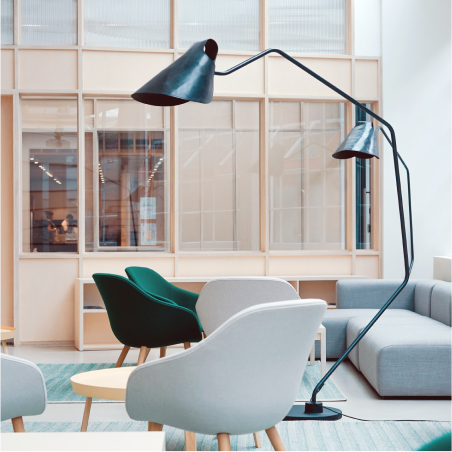
Sustainable design is no longer just a trend—it's a responsibility. Modern homeowners are increasingly seeking materials that minimize environmental impact while delivering the beauty, durability, and functionality they desire. The good news is that sustainable doesn't mean sacrificing style or quality.
The Foundation: Sustainable Wood Options
Wood remains one of the most versatile and beloved materials in interior design, but sourcing matters more than ever.
Eco-Friendly Wood Choices:
- FSC-Certified Wood - Forest Stewardship Council certified sustainable forestry
- Reclaimed Wood - Salvaged from old buildings, barns, and structures
- Bamboo - Rapidly renewable grass that grows without replanting
- Cork - Harvested from bark without harming the tree
- Local Hardwoods - Reduced transportation impact
Benefits of Sustainable Wood:
- Carbon sequestration when sourced responsibly
- Durability that lasts generations
- Natural beauty that improves with age
- Biodegradable at end of life
- Supports responsible forest management
Revolutionary Recycled Materials
Innovation in recycling has created beautiful materials from waste that would otherwise end up in landfills.
Recycled Material Options:
- Recycled Glass Countertops - Beautiful surfaces from post-consumer glass
- Recycled Metal Fixtures - Aluminum, steel, and copper given new life
- Plastic Lumber - Decking and furniture from recycled plastics
- Paper-Based Countertops - Compressed recycled paper with resin
- Tire Rubber Flooring - Durable flooring from recycled tires
"The most beautiful materials often tell a story of renewal and transformation. Sustainable design celebrates both the planet and the artistry of creating something beautiful from the discarded."
Natural Stone and Alternatives
While natural stone is beautiful and durable, its extraction can be environmentally costly. Consider these alternatives and sustainable stone options.
Sustainable Stone Choices:
- Local Stone - Reduced transportation, supports local economy
- Recycled Stone - Salvaged from demolition projects
- Engineered Stone - Quartz composite with recycled content
- Terrazzo - Traditional material made from stone chips in cement
- Porcelain Slabs - Manufactured from natural clay with minimal processing
Eco-Friendly Textiles and Soft Furnishings
Sustainable textiles are rapidly evolving, offering beautiful options that support both environmental and social responsibility.
Sustainable Fabric Options:
- Organic Cotton - Grown without pesticides or synthetic fertilizers
- Linen - Made from flax, requiring minimal water and processing
- Hemp - Durable, naturally antimicrobial, grows quickly
- Tencel/Lyocell - Made from sustainably sourced wood pulp
- Recycled Polyester - Created from plastic bottles and textile waste
- Wool from Responsible Sources - Ethically sourced from well-treated animals
Low-Impact Finishes and Paints
Indoor air quality is crucial for health, making low-VOC and natural finishes essential for sustainable homes.
Healthy Finish Options:
- Zero-VOC Paints - No volatile organic compounds
- Natural Paints - Made from clay, chalk, and plant-based pigments
- Milk Paint - Traditional paint made from milk protein
- Linseed Oil Finishes - Natural wood protection
- Water-Based Stains - Lower chemical content than solvent-based
Innovative Bio-Based Materials
Science is creating new materials from biological sources that offer surprising properties and aesthetic appeal.
Emerging Bio-Materials:
- Mycelium-Based Materials - Mushroom root structures for insulation and packaging
- Bioplastics - Made from plant starches and cellulose
- Seaweed-Based Materials - Films and textiles from algae
- Agricultural Waste Products - Straw-based building materials
- Lab-Grown Materials - Biofabricated alternatives to traditional materials
Sustainable Flooring Solutions
Flooring covers large areas and has significant environmental impact, making sustainable choices particularly important.
Eco-Friendly Flooring:
- Reclaimed Hardwood - Beautiful patina and character
- Bamboo Flooring - Rapidly renewable and durable
- Cork Flooring - Natural antimicrobial properties
- Linoleum - Made from natural linseed oil and cork dust
- Recycled Content Carpet - Made from plastic bottles or reclaimed fibers
- Polished Concrete - Utilizes existing foundation with minimal added materials
Sustainable Lighting Options
Energy-efficient lighting reduces environmental impact while creating beautiful ambiance.
Eco-Lighting Solutions:
- LED Technology - 80% more efficient than incandescent
- Solar-Powered Fixtures - Renewable energy for outdoor lighting
- Recycled Material Fixtures - Beautiful designs from reclaimed materials
- Natural Light Optimization - Skylights, light tubes, reflective surfaces
- Smart Lighting Systems - Automated efficiency and circadian rhythm support
The Economics of Sustainable Design
While some sustainable materials may have higher upfront costs, the long-term benefits often provide significant savings.
Financial Benefits:
- Durability - Longer lifespan reduces replacement costs
- Energy Efficiency - Lower utility bills over time
- Health Benefits - Reduced medical costs from better air quality
- Increased Property Value - Growing market demand for sustainable homes
- Tax Incentives - Many regions offer rebates for sustainable choices
How to Verify Sustainability Claims
With "greenwashing" common in marketing, it's important to verify authentic sustainability credentials.
Certification Programs to Look For:
- FSC (Forest Stewardship Council) - Responsible forestry
- GREENGUARD - Low chemical emissions
- Cradle to Cradle - Circular economy principles
- Energy Star - Energy efficiency standards
- LEED - Leadership in Energy and Environmental Design
- Global Organic Textile Standard (GOTS) - Organic fiber products
Implementing Sustainable Design in Your Home
Start with high-impact areas and gradually incorporate sustainable materials throughout your home.
Priority Areas for Sustainable Materials:
- Flooring - Large surface area, long-term impact
- Paint and Finishes - Direct air quality impact
- Insulation - Energy efficiency foundation
- Countertops - Daily use, durability important
- Furniture - Long-term investment pieces
Ready to Go Sustainable?
Our team at Homora specializes in sustainable design solutions that don't compromise on beauty or functionality. We can help you make environmentally conscious choices that align with your style and budget.
Consult on Sustainable DesignPrevious Article:
Modern Interior Design Trends for 2025
Next Article:
First Time Home Owner Ideas